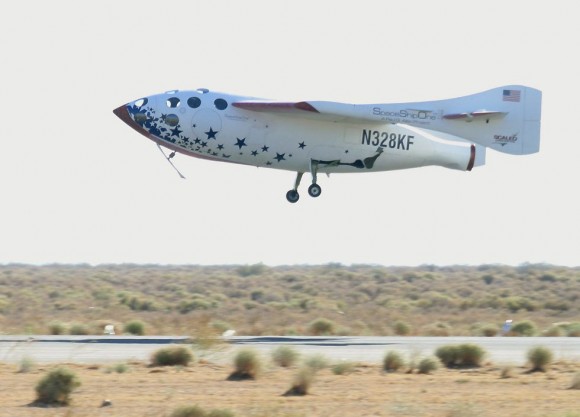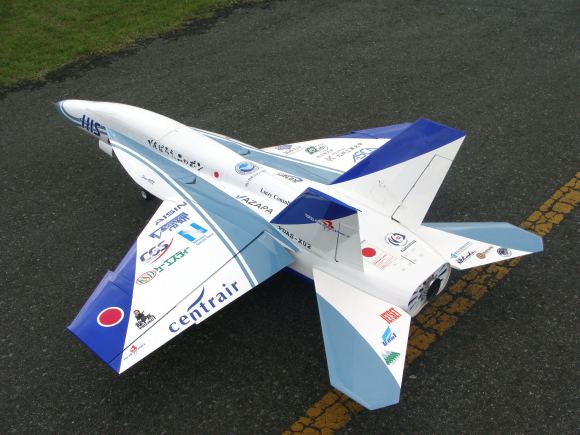When it comes to the growth of the private aerospace sector (aka. NewSpace), one of the more ambitious and exciting elements is the prospect of space tourism. Between SpaceX, Virgin Galactic and Blue Origin, proposals include flying customers to suborbital altitudes, flying them to the Moon, or even as far as Mars. And beyond the three NewSpace giants, several smaller companies are looking for a piece of the pie.
One such company is the Japanese startup PD AeroSpace, a Nagoya-based aerospace developer that is looking to provide commercial space launch services, intercontinental transportation, and sub-orbital flights in the near future. Intrinsic to this vision is the development of a unique space plane that will be able to fly tourists to suborbital altitude by 2023.
At present, 11 company employees are working at a plant in the town of Hekinan, Aichi Prefecture, to create a scaled-down, unmanned aerial vehicle (UAV) to test their propulsion concept. Once work is finished on this vehicle, the company will conduct a test flight that will bring the UAV to an altitude of 100 km (62 mi). This altitude is known as the Karman Line, and commonly represents the boundary between the Earth’s atmosphere and outer space.

PD Aerospace’s story began in 2004, when Scaled Composites LLC’s SpaceShipOne – the first privately-owned vehicle designed to reach space – won the prestigious $10 million Ansari X Prize. This inspired Shuji Ogawa, the 48-year-old president of PD AeroSpace, to create his own aerospace company in the hopes of opening space to private citizens and commercial investors.
As Ogawa, said in a recent interview with The Japan Times, “We would like to open a new space era (with the spacecraft)… Space has the power to attract people.”
Once testing is complete, PD Aerospace plans to conduct space flights using a full-scale version of this craft, which will be flown by two pilots and will be capable of carrying six passengers to an altitude of 110 km (68 mi). The cost per ticket is expected to be ¥17 million, or roughly $153,000 USD, per person.
According to the company’s plan, the space plane will rely on a new type of combination engine that marries the best aspects of jet engines and conventional rockets. Essentially, this engine is capable of switching from air-breathing mode – where the engine burns liquid propellant with atmosphere air to generate exhaust – to rocket mode, where the engine will switch to on-board oxidizer – to generate thrust. This allows the plane to conduct powered flights to and from a runway, and propel itself to suborbital altitudes.

After taking off, the plane will fly itself to an altitude of 15 km (9 mi), where the rocket engine will ignite and keep firing until the plane reaches an altitude of 50 km (31 mi). The rocket engine will then cut out as the plane soars to an altitude of 110 km, where passengers will experience 5 minutes of weightlessness. The craft will then descend back to Earth, gliding and relying on powered flight to land on a runway.
Last summer, the company successfully conducted an air-breathing/rocket mode switch experiment with the spacecraft’s pulse detonation engine. The company also conducts a pretraining program for space flight, where prospective customers receive a routine medical check, attend a course on what to expect in a space environment, and are then sent on a parabolic flight to experience the sensation of weightlessness (just like the Vomit Comet or a flight with the Zero Gravity Corporation).
If all goes as planned, PD Aerospace plans to conduct a crewed test flight of their new space plane by August of 2021. The company hopes to receive their certification by June 2023, followed by the first commercial flight in December of 2023. In the long run, PD Aerospace hopes to establish itself as a major player in the NewSpace industry, with ventures ranging from lunar tourism and asteroid mining to orbital hotels and infrastructure in Low Earth Orbit (LEO) and beyond.
As the 21st century progresses, humanity’s presence in space is expected to grow by leaps and bounds. But unlike the previous Space Age, which was characterized by two superpowers vying for dominance, the era of renewed space exploration will be characterized by cooperation between multiple space agencies and private industry.
Further Reading: Japan Times, PD Aerospace, PD Aerospace (2)


“The unmanned scaled-down model of the vehicle that will fly tourists to space by 2023.”
… is actually a scale model of an F/A-18 Hornet, being used for FPV flight testing, and not related to the actual look of the sub-orbital vehicle itself. Check your cited PD Aerospace (2) document 😉 .
No, it has a similar configuration, but it is not a model of the F/A-18. For one, it has a single engine that incorporates a rocket motor. However, you are correct in that the space plane and the FPV model will not look the same.